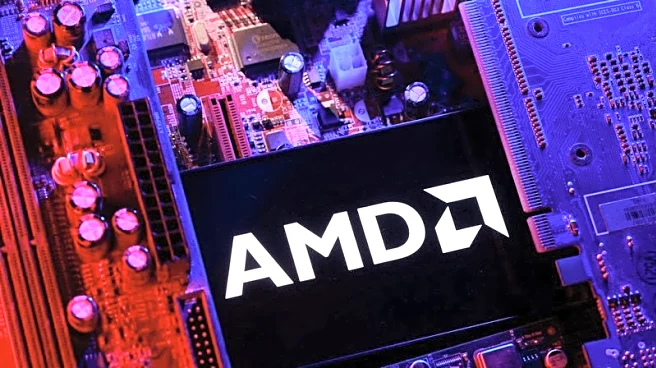What's Happening?
NVIDIA Corporation has released its Form 10-Q report for the third quarter of fiscal year 2026, showcasing substantial financial growth. The company's revenue reached $57,006 million, marking a 62% increase
from the previous year and a 22% sequential rise. This growth is primarily attributed to the demand for NVIDIA's data center compute and networking platforms, which are integral to accelerated computing and AI solutions. The report also highlights a gross profit of $41,849 million, with a gross margin of 73.4%, slightly down from 74.6% a year ago due to product transitions. Operating income rose to $36,010 million, and net income increased to $31,910 million, both up 65% from the previous year. NVIDIA's strategic focus on innovation and expansion is evident in its new product launches, including the Blackwell Ultra platforms and DGX Spark, which have contributed to revenue growth.
Why It's Important?
NVIDIA's impressive financial performance underscores its pivotal role in the AI and accelerated computing sectors. The company's growth reflects the increasing demand for AI infrastructure, which is crucial for various industries, including technology, healthcare, and finance. As NVIDIA expands its U.S.-based manufacturing capabilities, it aims to strengthen its supply chain and meet the growing demand for AI solutions. This expansion is significant for the U.S. economy, as it could lead to job creation and technological advancements. Additionally, NVIDIA's focus on innovation positions it as a leader in the AI industry, potentially influencing market trends and driving competition among tech companies.
What's Next?
NVIDIA plans to continue expanding its manufacturing capabilities in the United States to enhance supply chain resilience and meet the increasing demand for AI infrastructure. The company is investing in specialized equipment and processes to support domestic production, which may lead to further growth and stability. However, NVIDIA faces operational challenges, such as managing product transitions and sophisticated system configurations, which could impact production timelines and costs. The company's ability to navigate these challenges will be crucial in maintaining its growth trajectory and market leadership.














